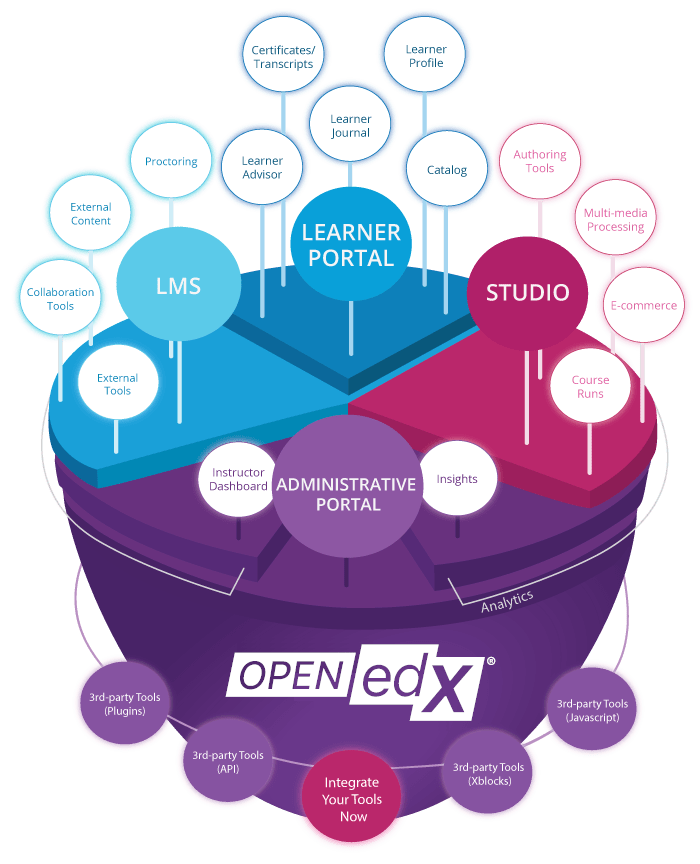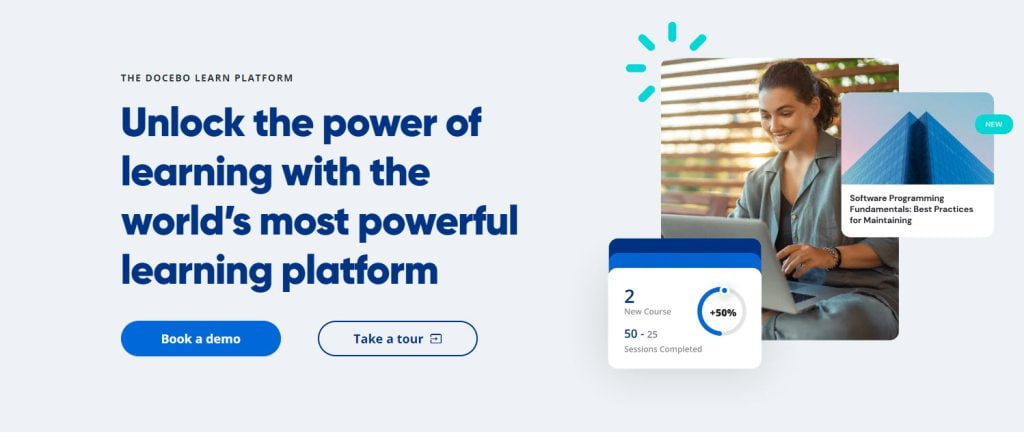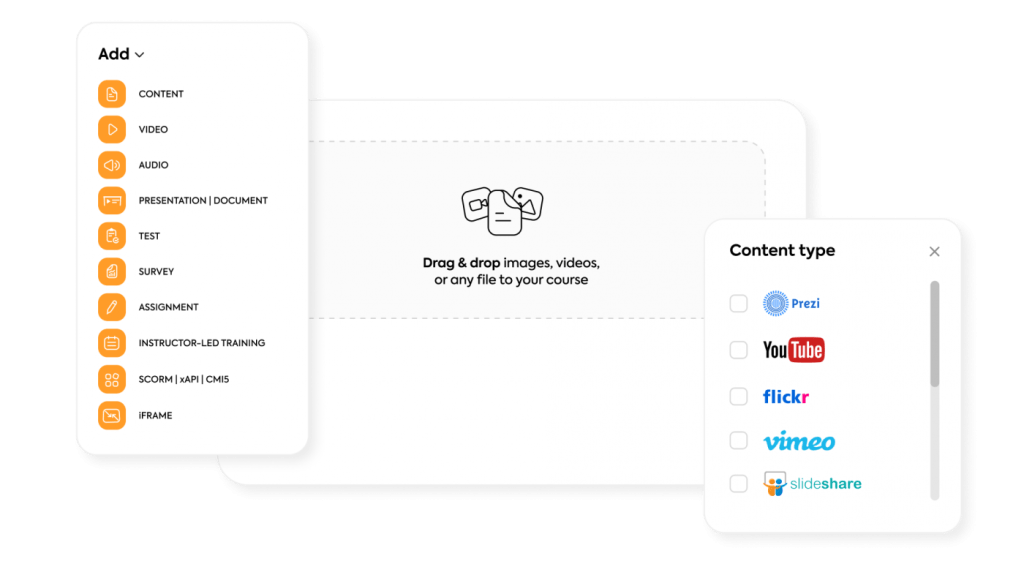Top 5 Open-Source Gamification Tools in 2023
Games have been an integral part of the human experience since the dawn of time. As infants, we begin to explore and understand the world around us through play, and this innate instinct for gaming never truly leaves us. What if we told you that the principles of play and game mechanics could be harnessed not only for childhood amusement but also as a powerful tool for lifelong learning and development? Welcome to the world of gamification.
In its simplest form, gamification is an approach that leverages the dynamics and elements of games to achieve tangible goals, and in many contemporary contexts, that goal is learning success. By infusing learning experiences with game-like structures, rules, and incentives, gamification has emerged as a transformative force in education and training, transcending age barriers and redefining how we acquire knowledge and skills.
In this realm, the classroom is no longer a place solely defined by textbooks, lectures, and rigid curricula. Instead, it becomes a dynamic arena where challenges, achievements, and the spirit of competition coexist to create an engaging and effective learning environment. Gamification takes the essence of what makes games so captivating—motivation, interactivity, and the thrill of accomplishment—and applies it to educational and professional settings.
Whether it’s mastering a new language, enhancing workplace productivity, or gaining expertise in a complex subject, gamification empowers learners to embrace their educational journey with enthusiasm and purpose. By introducing elements like points, badges, leaderboards, quests, and rewards, it taps into our inherent desire for achievement and progression, making the pursuit of knowledge a delightful and satisfying experience.
This transformational approach to learning is reshaping how we think about education and development, transcending traditional boundaries and opening doors to creativity, innovation, and lifelong improvement. In the following pages, we will delve deeper into the world of gamification, exploring its principles, applications, and the profound impact it has on learners of all ages.
1. Why Open-Source software?
Open-source software is a revolutionary paradigm in the world of technology and software development. It embodies a set of principles and practices that emphasize transparency, collaboration, and the unrestricted sharing of source code. This approach has gained significant traction for a variety of compelling reasons:
| Reasons for Using Open-Source Software | Elaboration |
|---|---|
| Transparency and Accountability | Open source provides transparency by making the source code accessible, fostering accountability and security through code scrutiny. |
| Cost-Efficiency | Open-source software is typically free, reducing costs associated with licensing and making high-quality software accessible to a wider audience. |
| Community Collaboration | A global community of developers and users collaboratively contribute, ensuring continuous improvement, innovation, and diverse problem-solving. |
| Customization and Flexibility | Open source allows users to modify and adapt the software to meet specific needs, promoting flexibility and optimization for unique use cases. |
| No Vendor Lock-In | Users are not locked into a single vendor, allowing them to choose from various service providers and avoid dependency on a single entity. |
| Longevity and Continuity | Open-source projects have longer lifespans as the community can maintain and improve them even if the original developers move on. |
| Rapid Innovation | Open source accelerates innovation by harnessing the collective expertise of global developers and users, keeping software up-to-date. |
| Security | Open source often has a strong security track record with many eyes on the code, leading to swift identification and resolution of vulnerabilities. |
| Ethical and Philosophical Considerations | Open source aligns with ethical principles of freedom, open knowledge sharing, and control over technology, promoting ethical software practices. |
| Global Impact | Open-source software has a global reach, bridging the digital divide, promoting digital literacy, and making advanced software accessible worldwide. |
Open-source software is a revolutionary paradigm in the world of technology and software development. It embodies a set of principles and practices that emphasize transparency, collaboration, and the unrestricted sharing of source code. This approach has gained significant traction for a variety of compelling reasons:
- Transparency and Accountability: Open-source software is built on the principle of transparency. The source code is freely accessible to anyone, which means that users can inspect, modify, and audit it. This transparency fosters accountability, as any vulnerabilities or malicious code are more likely to be identified and rectified quickly, promoting trust and security.
- Cost-Efficiency: Open-source software is typically free to use and distribute. This can significantly reduce the financial burden on individuals, businesses, and organizations. It eliminates the need for expensive licensing fees, making high-quality software accessible to a broader audience.
- Community Collaboration: Open source thrives on a global community of developers and users who voluntarily contribute to its development. This collaborative approach harnesses the collective wisdom and skills of a diverse range of individuals, leading to continuous improvement, innovation, and a broader perspective on problem-solving.
- Customization and Flexibility: With access to the source code, users have the freedom to modify and adapt the software to meet their specific needs. This flexibility is invaluable for tailoring software to unique requirements and optimizing it for particular use cases.
- No Vendor Lock-In: Proprietary software often creates vendor lock-in, where users are dependent on a single company for updates, support, and compatibility. Open source liberates users from such constraints, allowing them to choose from a variety of service providers and ensuring that they are not tied to a single vendor.
- Longevity and Continuity: Open-source projects tend to have longer lifespans. Even if the original developers move on or discontinue their involvement, the community can continue maintaining and improving the software. This reduces the risk of software obsolescence.
- Rapid Innovation: The collaborative and open nature of open source accelerates innovation. Developers from around the world can contribute to a project, bringing a wealth of diverse perspectives and expertise to drive progress and keep software up-to-date.
- Security: While no software is immune to vulnerabilities, open-source software tends to have a strong security track record. With many eyes on the code, security issues are often identified and resolved more swiftly, making it a dependable choice for security-conscious users.
- Ethical and Philosophical Considerations: Open source aligns with ethical principles of freedom and open knowledge sharing. It embodies the idea that software should be a public good, accessible to all, and that individuals should have control over the technology they use.
- Global Impact: Open-source software has a global reach, benefiting individuals, organizations, and even entire nations. It can help bridge the digital divide, promote digital literacy, and enable less privileged regions to access and use advanced software without significant financial barriers.
In summary, open-source software represents a fundamental shift in the way we create and distribute technology. It empowers individuals and communities, promotes transparency and collaboration, and is driven by a commitment to open knowledge and accessibility. It has become a driving force in the modern software industry, transforming the way we think about technology and its societal impact.
1. Top 5 Open-Source Gamification Tools in 2023
Numerous tools are readily available to seamlessly integrate gamification elements into the learning journey. Our mission is to introduce you to the cream of the crop, streamlining your quest for the most exceptional open-source gamification solutions. Without delay, let’s embark on this exploration.
1. Open edX
Open edX is an open-source online learning platform and massive open online course (MOOC) software that was originally developed by edX, a joint initiative of Harvard University and the Massachusetts Institute of Technology (MIT). It has since been released as open-source software, allowing institutions and individuals to create their own online courses and learning environments. Open edX has gained significant popularity in the world of online education, and it’s used by numerous educational institutions, corporations, and organizations for creating and delivering online courses.
Here’s a table summarizing the strengths and weaknesses of Open EdX:
Strengths of Open EdX:
| Strength | Elaboration |
|---|---|
| Flexibility and Customization | Open EdX is highly customizable, allowing users to adapt the platform to their specific needs, including branding, course structure, and content. |
| Scalability | The platform is designed to handle a large number of users and courses simultaneously, making it ideal for organizations anticipating growth. |
| Community and Support | Open EdX boasts a vibrant and supportive community of developers and users who contribute to its development, offer resources, and provide extensions. |
| Powerful Learning Tools | It provides interactive tools like quizzes, discussion forums, and multimedia integration, enhancing course engagement and interactivity. |
| Analytics and Insights | Robust analytics and reporting features enable tracking learner progress and engagement, facilitating data-driven course improvements. |
| Comprehensive Documentation | Extensive documentation simplifies setup and management, aiding administrators and instructors in effectively using the platform. |
Weaknesses of Open EdX:
| Weakness | Elaboration |
|---|---|
| Complex Setup | Implementing and configuring Open EdX can be complex, especially for users without strong technical expertise, requiring dedicated support. |
| Resource-Intensive | Running an Open EdX instance can be resource-intensive, particularly for large organizations with a high number of users, necessitating robust hardware and server resources. |
| Steep Learning Curve | Instructors and course creators may face a learning curve when becoming accustomed to the platform’s features and settings, which can be initially challenging. |
| Limited Gamification Features | While Open EdX offers some gamification elements, it may not be as feature-rich in gamification as specialized gamification platforms. |
| Constant Updates and Maintenance | Maintenance and keeping the platform up to date with the latest features and security patches require ongoing effort and resources. |
The “Open edX” platform is a robust, open-source online learning system that’s gaining popularity in educational institutions, corporations, and nonprofit organizations. It offers a highly customizable and scalable solution for creating and delivering online courses and educational content. Open edX’s strengths lie in its flexibility, a supportive user community, and powerful learning tools. It allows for tailored course development, easy access to data insights, and interactive learning experiences through quizzes and multimedia. However, implementing Open edX may require technical expertise, substantial server resources, and the willingness to overcome a learning curve. Despite these challenges, Open edX has a wealth of potential applications, making it an attractive choice for institutions and organizations seeking to expand their online learning initiatives.
2. Docebo
Docebo is a cloud-based eLearning platform that offers a comprehensive solution for creating, delivering, and managing online training and educational content. It is designed for businesses, educational institutions, and organizations of all sizes. Below, you’ll find a table summarizing the strengths and weaknesses of Docebo.
Strengths of Docebo:
| Strength | Elaboration |
|---|---|
| User-Friendly Interface | Docebo is lauded for its intuitive and user-friendly interface, simplifying navigation for both administrators and learners. |
| Scalability | The platform is highly scalable, accommodating organizations of various sizes with room for growth. |
| Course Authoring and Content Management | Docebo offers robust tools for creating engaging courses and managing content effectively, including multimedia elements. |
| Mobile Learning | It supports mobile learning with a responsive design, ensuring that content is accessible across different devices. |
| Reporting and Analytics | Robust reporting and analytics tools provide insights into learner performance and course effectiveness, aiding data-driven decision-making. |
| Integration Capabilities | Docebo allows for integration with numerous third-party applications and Learning Management Systems (LMS), creating a connected eLearning ecosystem. |
Weaknesses of Docebo:
| Weakness | Elaboration |
|---|---|
| Cost | Docebo’s cost can be relatively high, potentially limiting access for smaller businesses and educational institutions. |
| Complex Setup | While the platform is user-friendly, the initial setup and configuration can be complex, requiring technical expertise for a seamless implementation. |
| Limited Gamification Features | Docebo’s gamification features are somewhat limited compared to specialized gamification platforms, potentially not meeting advanced gamification needs. |
| Technical Support | Some users have reported mixed experiences with Docebo’s technical support, with occasional delays in issue resolution. |
| Customization | While it offers some customization, users may encounter limitations when adapting the platform to highly specific branding or functionality requirements. |
To recapitulate Docebo is a scalable and user-friendly eLearning platform with robust course authoring and content management capabilities. It offers mobile learning, comprehensive reporting and analytics, and integration options. However, the platform’s cost, initial setup complexity, limited gamification features, potential technical support variations, and customization constraints should be considered when evaluating it for eLearning needs.
3. Moodle
Moodle is an open-source Learning Management System (LMS) and course management platform used for creating and delivering online courses. It is designed to help educators, instructors, and institutions create virtual learning environments where they can manage and deliver educational content, engage with students, and assess their progress. Moodle provides a wide range of tools and features to support online and blended learning, making it a popular choice for schools, universities, businesses, and organizations of all sizes.
Here’s a table summarizing the strengths and weaknesses of Moodle, along with a concise gist:
Strengths of Moodle:
| Strength | Elaboration |
|---|---|
| Open Source and Cost-Efficient | Moodle is open-source, making it cost-effective as it’s free to use and modify. It eliminates the need for expensive licenses. |
| Customization and Flexibility | Moodle is highly customizable, allowing institutions to adapt it to their specific needs, including branding, course structure, and content. |
| Active Community and Support | Moodle boasts a large and active community of developers and users who provide support, resources, and a wide range of plugins. |
| Scalability | The platform is designed to be scalable, accommodating diverse institutions, from small schools to large universities. |
| Wide Range of Features and Plugins | Moodle offers a rich set of features for course creation, assessment, and communication, and it supports numerous plugins to enhance functionality. |
| Robust User Management and Role Control | Moodle provides advanced user management and role control, enabling administrators to fine-tune access and permissions. |
Weaknesses of Moodle:
| Weakness | Elaboration |
|---|---|
| Complex Setup and Learning Curve | While it’s highly customizable, the initial setup and configuration can be complex, and users may face a learning curve to master its features. |
| Resource-Intensive | Running Moodle can be resource-intensive, particularly for large institutions, necessitating robust hardware and server resources. |
| Limited Gamification Features | Moodle’s gamification features are somewhat basic, lacking the depth and variety of specialized gamification platforms. |
| Inconsistent User Interface | Some users find Moodle’s user interface to be inconsistent and less intuitive, which can impact the user experience. |
| Maintenance and Updates | Ongoing maintenance and staying up to date with the latest features and security patches require dedicated effort and resources. |
Moodle is an open-source and highly customizable Learning Management System (LMS) known for its cost-efficiency and flexibility. It enjoys the support of a large and active community, making it suitable for institutions of various sizes. However, users should be prepared for a potentially complex setup, resource requirements, and a learning curve. While Moodle offers a wide range of features, its gamification options are somewhat limited, and some users may find its user interface inconsistent.
4. Gamify
Gamify is a gamification platform that helps organizations create and implement game-based experiences to engage and motivate employees, customers, and users. Gamification involves integrating game elements, such as points, badges, leaderboards, and challenges, into non-gaming contexts to encourage specific behaviors and achieve goals.
Here’s a table summarizing the strengths and weaknesses of Gamify, along with a concise gist:
Strengths of Gamify:
| Strength | Elaboration |
|---|---|
| Engagement and Motivation | Gamify excels in boosting engagement and motivation by using gamification elements that tap into users’ intrinsic desires for achievement and recognition. |
| Customization and Flexibility | The platform offers a high degree of customization, allowing organizations to tailor gamification strategies to their specific needs and objectives. |
| Data and Analytics | Gamify provides robust data and analytics tools for tracking user activity and assessing the effectiveness of gamification efforts. |
| Integration Capabilities | It supports integration with various systems and platforms, making it suitable for organizations with existing digital ecosystems. |
| Accessibility | Gamify is accessible on various devices, ensuring users can participate in gamified experiences from smartphones, tablets, and desktop computers. |
Weaknesses of Gamify:
| Weakness | Elaboration |
|---|---|
| Complexity for Setup | Setting up a gamification strategy on Gamify can be complex, and organizations may need to invest time and resources for a successful implementation. |
| Limited Game Design Tools | Gamify primarily focuses on gamification elements rather than offering a full-fledged game design platform, which may not be suitable for organizations seeking complex game creation. |
| Cost | While cost-effective for many organizations, the pricing structure may not be suitable for smaller businesses or startups. |
| Learning Curve | Users unfamiliar with gamification concepts may face a learning curve when designing effective gamified experiences. |
Gamify is a powerful platform for introducing gamification elements into various contexts to enhance engagement and motivation. It offers high levels of customization and analytics capabilities, making it suitable for organizations seeking to leverage gamification to achieve specific goals. However, it may require some effort to set up and may not be the best choice for organizations looking to create complex, full-fledged games.
5. Talent LMS
Talent LMS is a cloud-based Learning Management System (LMS) that offers a comprehensive platform for organizations to create, manage, and deliver online training and educational content. It is designed to cater to the needs of businesses, educational institutions, and organizations of various sizes. Talent LMS is recognized for its user-friendly interface, cost-effectiveness, and scalability.
Here’s a table summarizing the strengths and weaknesses of Talent LMS:
Strengths of Talent LMS:
| Strength | Elaboration |
|---|---|
| User-Friendly Interface | Talent LMS is renowned for its intuitive and user-friendly interface, simplifying navigation for administrators and learners. |
| Cost-Efficient | It offers cost-effective pricing options, making it accessible to a wide range of organizations, including small businesses and educational institutions. |
| Customization | Talent LMS allows for a degree of customization, enabling organizations to adapt the platform to their specific branding and content needs. |
| Scalability | The platform is designed to be scalable, accommodating organizations of varying sizes and enabling them to expand their training initiatives. |
| Mobile Learning | Talent LMS provides a mobile-responsive design, ensuring that learners can access content and training materials from different devices. |
Weaknesses of Talent LMS:
| Weakness | Elaboration |
|---|---|
| Limited Advanced Features | Some advanced LMS features, such as complex gamification and deep analytics, are relatively limited in Talent LMS compared to more advanced platforms. |
| Reporting Capabilities | While it offers basic reporting tools, it may lack the depth and customization options desired by organizations with complex reporting needs. |
| Support Variability | User experiences with customer support may vary, and some organizations may encounter challenges in receiving timely assistance. |
| Customization Constraints | Talent LMS’s customization options may have limitations, restricting organizations seeking highly tailored solutions. |
Talent LMS is a user-friendly and cost-efficient Learning Management System, making it accessible to organizations of various sizes. It offers a degree of customization and scalability and supports mobile learning. However, it may lack some advanced features and reporting capabilities, and the extent of customization options may not meet the needs of organizations seeking highly tailored solutions.
2. Wrapping Up
In summary, the world of learning and education has witnessed a remarkable transformation with the advent of versatile tools and platforms like Moodle, Talent LMS, and Gamify. While each of these solutions has its own set of strengths and weaknesses, they collectively represent the diversity and adaptability of educational technology in the modern era.
Moodle, an open-source powerhouse, empowers educational institutions and businesses to create customized learning environments with its extensive feature set and supportive community. However, it may require more technical expertise during setup.
Talent LMS offers a user-friendly and cost-effective alternative, making it accessible to a wide range of organizations. Its scalability and mobile learning support ensure it meets the needs of various users, even though it may lack some advanced features.
Gamify specializes in enhancing engagement and motivation through gamification, providing customization and analytics capabilities to meet specific goals. Still, its setup complexity and limited game design tools may pose challenges for some users.
Ultimately, the choice between these platforms hinges on individual needs and objectives. The educational technology landscape continues to evolve, offering a multitude of options for creating engaging and effective learning experiences. These platforms represent the flexibility and innovation that characterize modern education, catering to a diverse array of educational and training needs.









